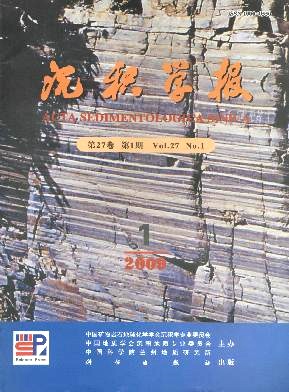A Review on DeepSea Sedimentation Theory: Significances to Oilgas Exploration
- Received Date: 1900-01-01
- Rev Recd Date: 1900-01-01
- Publish Date: 2009-02-10
-
Key words:
- Bouma Sequence /
- sediment gravity flow /
- bottom traction current /
- turbidity current and turbidite fan /
- submarine fan /
- deepsea sequence stratigraphy /
- deepsea oilgas exploration
Abstract: It has been challenged for the sedimentological theories, such as “Bouma Sequence” and “turbidite fan”, in the direction of deepsea oilgas exploration. This is because, as Shanmugam et al. say, the “Bouma Sequence” is not a unique product of turbidity sedimentation, but results from cooperation of several sedimentation, i.e., sandy debris flow, turbidity current, internal tide and wave, contour current. Following the interpretation by Shanmugam et al., it is summarized as: sediments of the “Bouma Sequence” section A could be caused by sandy debris flow besides of turbidity current, those with crossbeddings within the sections BD be traction current; only those by turbidity current could be called turbidite; socalled “high density turbidity” is not real turbidity but sandy debris flow; turbidity current is Newton current and turbulent sediment gravity flow; there are no suspended layer and reverse grading within turbidite. It lacks linkage for deepsea traction current between theory and practice although advances have been made. And as an aspect of sedimentation, deepsea sequence stratigraphy is to some degree different from that in shallow sea:there are at least three types of sequence boundaries——slope erosional surface, downlap surface of lowstand systems tracts (LST), and submarine sediment hiatus surface; when it is dominated by a terrigenous depositional setting, LSTs would be composed of submarine fan sediments, transgressive systems tracts (TSTs) and early highstand systems tracts (HSTs) are probably of noncalcareous pelagic sediments, and few HSTs are found; when it becomes carbonate setting, LSTs are dominant of slump and debris sediments, TSTs and early HSTs could spread on submarine fan, and late HSTs could be consisted of calciturbidites. Support remarks and suggestions are proposed by review and experienced works of deepsea sedimentation: it would be better to invert comma “Bouma Sequence” to make a mark showing a note of notunique causal turbidite result; it is necessary to use the term “submarine fan” and/or "deepsea fan instead of “turbidite fan”; study of both theoretic deepsea traction currents (e.g. internal tide and wave, contourite) and practical field needs to promote in future. It is great potential and prosperous for oilgas exploration in deepsea sediment, especially for reservoir prediction of LST turbidite, sandy debris and bottom traction sandy bodies. However, to get a new burst in deepsea oilgas exploration, a key is that more precise and detailed study on theory of deepsea sedimentation and depositional procession would be engaged in future.
| Citation: | LI Xianghui. A Review on DeepSea Sedimentation Theory: Significances to Oilgas Exploration[J]. Acta Sedimentologica Sinica, 2009, 27(1): 77-86. |






 DownLoad:
DownLoad: